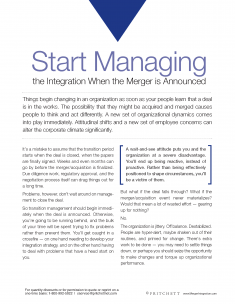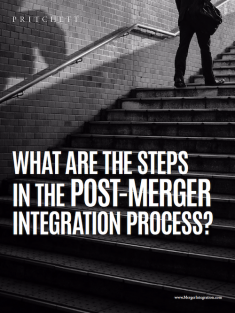Things begin changing in an organization as soon as your people learn that a deal is in the works. The possibility that they might be acquired and merged causes people to think and act differently. A new set of organizational dynamics comes into play immediately. Attitudinal shifts and a new set of employee concerns can alter the corporate climate significantly.
It’s a mistake to assume that the transition period starts when the deal is closed, when the papers are finally signed. Weeks and even months can go by before the merger/acquisition is finalized. Due diligence work, regulatory approval, and the negotiation process itself can drag things out for a long time.
Problems, however, don’t wait around on management to close the deal.
So transition management should begin immediately when the deal is announced. Otherwise, you’re going to be running behind, and the bulk of your time will be spent trying to fix problems rather than prevent them. You’ll get caught in a crossfire — on one hand needing to develop your integration strategy, and on the other hand having to deal with problems that have a headstart on you . . .





